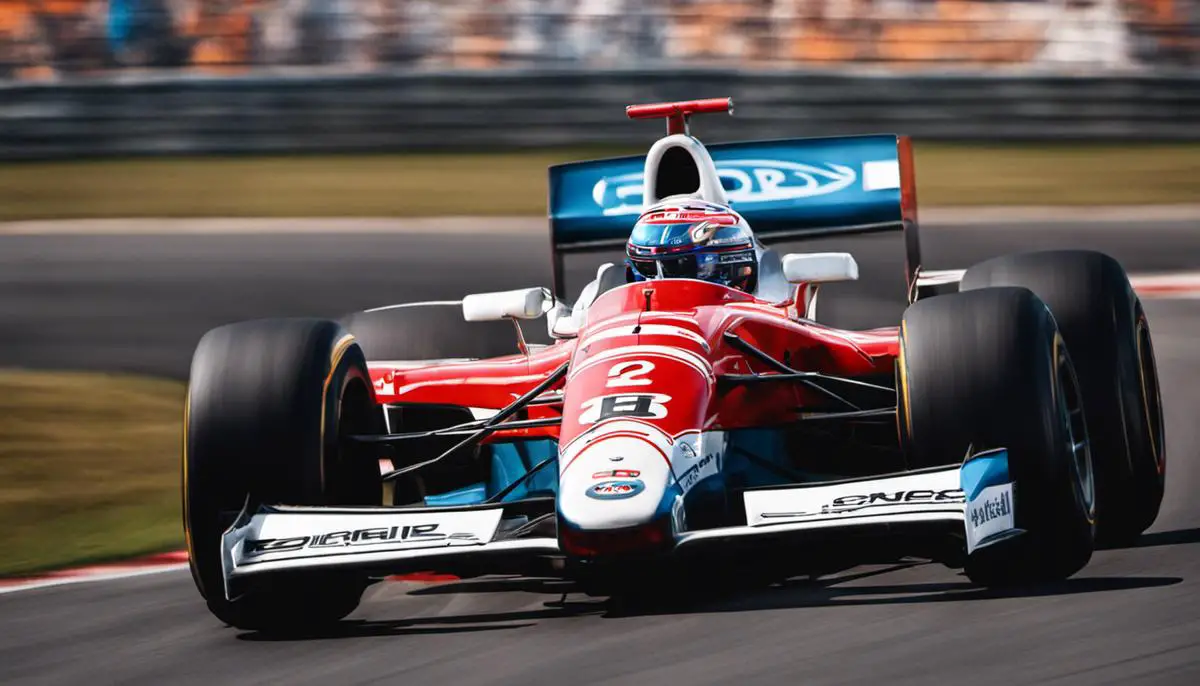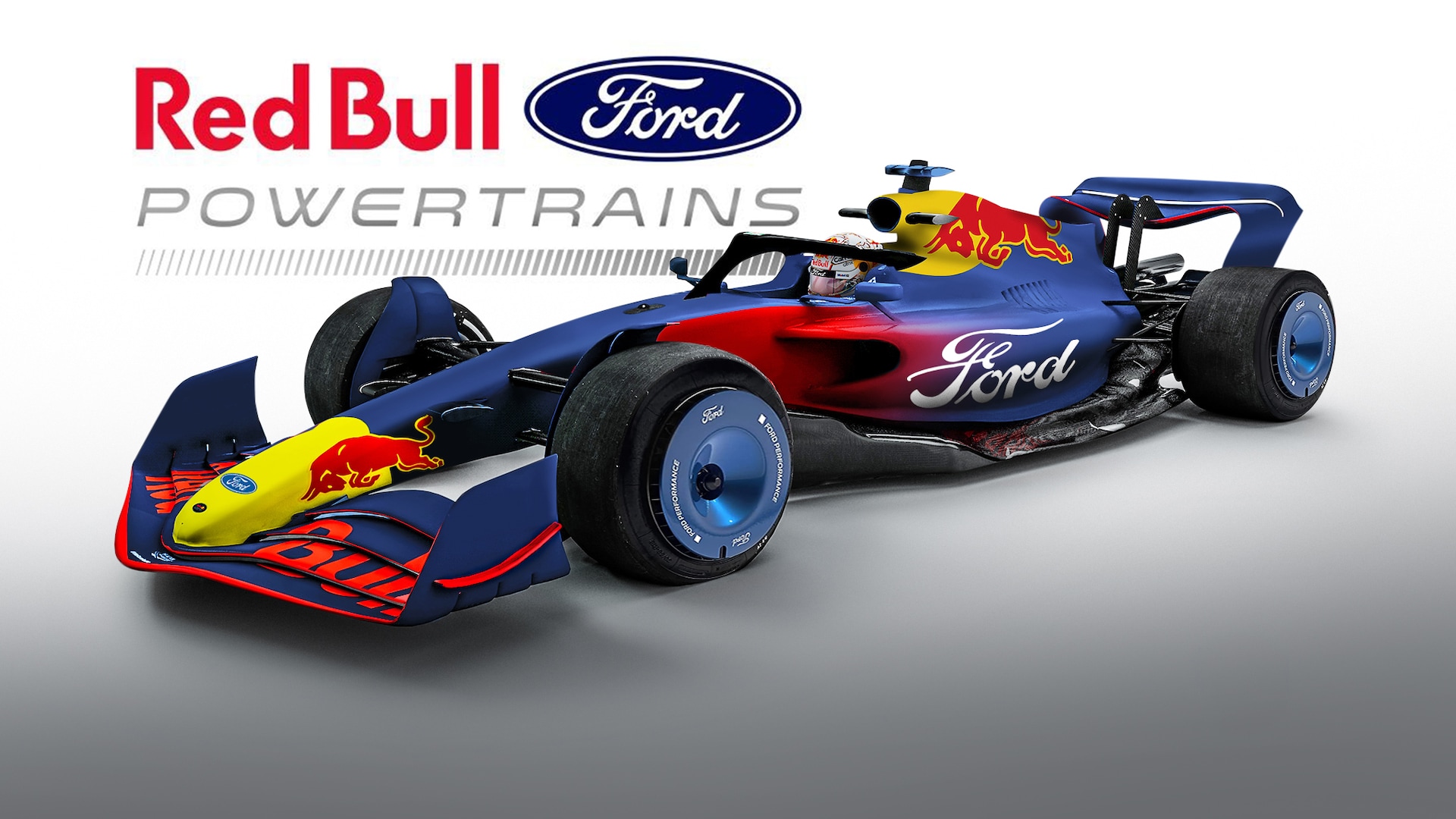Among the iconic names that have significantly defined the course of Ford F1 racing, Ford unarguably tops the list. Ford’s journey was a tale of relentless innovation, prestigious accomplishments, and occasional controversies.
The company’s entry into F1 was marked by a to push the boundaries of automotive performance. The marque’s determination gave birth to iconic achievements. These left an indelible mark on the F1 landscape, while setting new standards for competitors.
F1worldwide.com Recommends
- The Top F1 Rivalries: A Look Back at the Most Intense Battles
- Is Ford joining Up With Red Bull?
- The Unforgettable Races on the Best F1 Circuits
- Ferrari vs Red Bull: A Racing Rivalry Examined
- Yuki Tsunoda Height – the shortest driver in F1 History
Ford F1 and It’s Entry in Series
Ford F1 Racing
Ford’s interest in Formula One racing was sparked in the early 1960s. Ford Motor Company, led by Henry Ford II during this time, sought to increase the brand’s international appeal.
The company’s direct involvement began in 1966, channeling resources to augment performance and competitiveness.
Ford F1 – Investing in Cosworth Engineering
In order to achieve their ambitious objectives, Ford partnered with British firm Cosworth Engineering. It led to one of the most significant investments in the history of Formula One.
Cosworth was known for specialist expertise in high-performance engineering, a thriving reputation cultivated by founders Mike Costin and Keith Duckworth.
The collaboration between Ford’s financial backing and Cosworth’s technical prowess led to the development of the iconic Cosworth DFV (Double Four Valve) engine.
Ford F1 – The Birth of Cosworth DFV
The Cosworth DFV was designed specifically for Lotus. The top-tier British racing team represented a significant challenge for the World Constructors’ Championship. The engine was known for its remarkable engineering, affordability, and durability, becoming synonymous with many victories in Formula One.
Its debut was in 1967 at the Dutch Grand Prix. Jim Clark driving a Lotus 49 achieved victory.
Driver Involvement and Success with Ford F1
Some of the most illustrious drivers in the history of F1 have competed. These winners, driving cars powered by Ford F1 engines include.
- Graham Hill
- Jim Clark
- Jackie Stewart
- Emerson Fittipaldi
- James Hunt
- Nelson Piquet
- Alain Prost
- Michael Schumacher
- Ayrton Senna
In 1968, with the assistance of Ford’s Cosworth engine, Lotus became the World Constructors’ Champion, the first of many successes.
Ford F1 – Dominance in Formula One
By the end of the 1960s, a majority of the F1 grid used the Cosworth DFV engine. This dominance persisted through the 1970s and until the end of the 1980s.
The engine powered 12 World Champion drivers and made its final appearance in a F1 race in 1985. The engine took boasts of 155 wins from 262 races, a testament to Ford’s highly regarded impact on F1 history.
Ford F1 – It’s Legacy in the Modern Era
Ford doesn’t currently participate in Formula 1 (F1), but its influence is nonetheless felt throughout the sport today. The engine that was birthed from the cooperation of Ford and Cosworth, the DFV, has transformed the racing world.
By establishing a more even playing field, teams had the opportunity to compete more fiercely. This laid the groundwork for the current design and engine rules of F1. The mark the company has made on the sport’s advancement and competition is undeniable.

Major Achievements of Ford F1
Ford’s Inception in Formula 1
Ford’s foray into the realm of Formula 1 commenced in the 1960s. In alliance with Lotus, Ford revealed their debut F1 engine, the Lotus-Ford, at the Dutch Grand Prix in 1967.
Greeted by the racing community with applause, the engine was subsequently employed in a multitude of race cars. Jim Clark, a skilled Scottish driver, piloted this engine to clinch its maiden victory at the United States Grand Prix.
This partnership between Ford and Lotus was the beginning of an enduring legacy for both organizations.
Ford F1 Revolutionized Engine Design
Considered one of the landmark moments in F1 history, Ford introduced the Ford Cosworth DFV (Double Four Valve) in 1967.
A high-performance engine that was lightweight and low-cost compared to its competitors. Itquickly became the favored choice of many teams in Formula 1. It won 155 races over a period of 15 years.
The Cosworth DFV revolutionized the F1 engineering and design approach, cementing Ford’s place in F1’s history.
Ford F1 – Success with Cosworth Engines
Ford’s peak success years in F1 commenced in 1968. Lotus driver, Graham Hill, won the Drivers’ Championship using the Ford Cosworth DFV engine.
This marked the beginning of the Ford Cosworth engine dominance in F1, which lasted till 1982.
Among Ford’s other notable milestones included the 1970 formation of March Engineering. This was a British Formula One team using Ford’s Cosworth engines.
The period from 1973 to 1982 saw the Williams F1 team, powered by Ford, securing multiple world championships.
Impact of Regulations on Ford’s Presence
Changing F1 regulations in 1989 affected Ford’s performance and presence. The introduction of normally-aspirated engines resulted in a decline for Ford’s turbo-charged engines.
However, they adapted with the redesigned Cosworth DFR. This engine did not achieve the same dominance as its predecessor.
Ford F1 – End of an Era and Later Years
The 2004 season marked the end of Ford’s direct involvement in F1 as they sold their Jaguar Racing team. Despite this, Ford-owned units like Cosworth continued, supplying engines to several teams. Interestingly, Cosworth even provided engines for a new team, Virgin Racing, in the 2010 season.
Notable Individuals in Ford’s F1 History
Various influential individuals played decisive roles in Ford’s F1 success. Keith Duckworth and Mike Costin, the founders of Cosworth, were instrumental in developing the game-changing Cosworth engine.
Ayrton Senna accomplished his maiden F1 win in 1985 driving a Lotus with a Ford engine.
Ford F1 – A Lasting Legacy
Ford’s involvement in F1 may have ended, but its influence is forever etched in the annals of the sport. Its contributions, have left a lasting legacy that continues to shape the world of Formula 1.

Ford F1 – Challenges & Controversies
Ford F1 – Early Beginnings: The Lotus, Cosworth, and Ford Alliance
The 1960s marked Ford’s entrance into F1 racing. It was structured through a strategic acquisition of British engineering firm, Cosworth. They were known for its prowess in high-performance combustion engines.
This marked the inception of the Ford-Cosworth alliance, birthing the groundbreaking Ford-powered Cosworth DFV V8 engine. The new engine made its grand debut in 1967. It powered a Lotus 49, driven by none other than the F1 heavyweight, Jim Clark.
Ford F1 – Success, Dominance, and Multiple Championships
The Cosworth DFV engine powered Lotus cars enjoyed significant success in the late 1960s to the late 1980s. The Ford-powered engine emerged as the dominant power unit in F1, claiming 155 wins and 12 Drivers’ Championships.
The success streak ran through teams, including McLaren, Williams, and Lotus who sported the Ford/Cosworth powerhouse.
Ford F1 – Return to Formula 1 and Partnership with Benetton
After a quiet period in the 1990s, Ford returned to F1. They acquired Stewart Grand Prix and renaming it Jaguar Racing in 1999.
Despite their preceding track record, the new venture faced several challenges, failing to clinch significant victories on the tracks.
Simultaneously, Ford also supplied engines through Cosworth to several other teams, including the Sauber and Minardi squads. Among these, the most successful relationship was with Benetton.
This resulted in two drivers’ championships for Michael Schumacher in 1994 and 1995.
Selling Jaguar and Final Exit
Despite the investments and enthusiasm, Ford’s F1 venture was not as successful. Jaguar failed to secure a single victory.
Adding to the financial pressures of running a competitive F1 team, Ford made the decision to exit the sport.
In 2004, Ford announced the sale of its F1 operations, including Jaguar Racing and Cosworth, to Red Bull. This signaled Ford’s final exit from the sport.
Ford F1 – Controversies and Criticism
Throughout its F1 journey, Ford faced several controversies and criticisms. Among these was the debate surrounding the role of Ford’s engine in the infamous 1994 San Marino Grand Prix accident that claimed the life of the legendary driver, Ayrton Senna.
Senna’s Williams FW16 car, powered by Ford’s Cosworth engine, crashed, sparking a significant debate about safety in F1.
Furthermore, some critics pointed out that despite Ford’s early dominance in the sport, the American company failed to prioritize F1 in its global motorsport’s strategy. This, critics argued, contributed to Ford’s eventual withdrawal from F1.
Despite a complex history peppered with challenges, successes, and an eventual exit, Ford’s impact on F1—through its legendary engines, race victories, and teams—stand as a crucial episode in the annals of the sport.
Their adventures within F1 racing highlight the hard-hitting nature of the competition as well as the pressures that form an integral part of such high-stakes motorsport.

Ford and its Contribution to F1 Technology
Ford’s Introduction to the F1 Scene
Ford’s maiden voyage into Formula 1 (F1) motor racing began in the swinging sixties. This period ushered in a time when car manufacturers began to wield more influence within the sport.
Prompted by a desire to amplify its brand reputation, Ford boldly stepped into the fierce arena of F1. A partnership with Cosworth, a British engineering firm, in 1967 brought about the birth of the renowned Ford Cosworth DFV engine.
The Revolutionary Ford Cosworth DFV
The DFV, standing for Double Four Valve, was a high-revving V8 engine that played a significant part in modernizing F1 cars. When compared to its contemporaries, the engine was lightweight, efficient, and reliable, offering substantial horsepower.
The engine’s design allowed it to be part of the car’s structure, bearing the rear suspension and gearbox, thereby reducing the overall weight. This inventive layout soon became the standard for all racing cars.
The Ford Cosworth DFV dominated F1 racing until the late 1980s, powering 12 Drivers’ World Champions and ten Constructors Championship winners.
Ford’s Influence Beyond the Race Track
Ford’s involvement in F1 also catapulted the company into a new realm of innovation and technological development. The skills, insights, and knowledge gained from their F1 experience played a significant role in improving Ford’s consumer vehicles.
The company incorporated numerous advanced design features and technologies into their vehicles, such as lightweight materials, aerodynamics, and high-performance engines, enhancing efficiency and performance.
Ford’s Later Contributions
Throughout the 1970s and 1980s, Ford continued to contribute to F1 through their investment in various teams and technological advancements. The company entered the turbo-era of F1 with the development of the turbocharged Ford-Cosworth TEC V6 engine, in 1982.
Despite not replicating the success of the DFV, the engine was competitive and was adopted by several teams, including Tyrrell, Williams, and Benetton.
Contemporary Ford F1
In more recent years, Ford’s presence in F1 has been less prominent. The brand’s last significant involvement was with the Jaguar team, under their ownership between 2000 and 2004.
However, the influence of Ford’s pioneering contributions to F1 is still felt today, underlining the lasting impact made by the venerable DFV engine and other innovative technologies.
The Ford Motor Company and its Massive Impact on F1 Racing
Undeniably, Ford had played a crucial role in sculpting the direction of both the F1 sport and the entire automobile industry due to their innovative contributions to F1 technology.
This proactiveness stimulated competition amongst manufacturers, leading to novel technological and design concepts that are still relevant today.
Even after its departure, the impact of Ford’s involvement with F1 stands as a testament, significantly influencing the design and construction of racing cars and everyday vehicles.

Ford’s Exit & Legacy in F1
Why Ford Backed Out of F1
In 2004, Ford came to the decision to conclude its long standing involvement with Formula 1 after a fruitful journey spanning more than four decades. Joining hands with Lotus in the ’60s, Ford saw the birth of the historic Ford-Cosworth engine which celebrated its maiden Grand Prix win in 1967, driven by Jim Clark.
This successful partnership with Cosworth led to the creation of a series of engines, driving a range of F1 teams to victory over the years.
Nevertheless, the dawn of the 21st century signaled a shift in the automotive industry and motorsports. The rise of factory teams from constructors such as Ferrari, Mercedes, and Renault, all sporting custom-designed engines, combined with evolving F1 dynamics and changing market trends meant Ford had to reconsider its involvement and ultimately decided to step back from the competition.
Ford F1 – Reasons for Its Exit
One of the reasons Ford decided to step away from the F1 world was financial constraints. The global automotive industry was facing a downturn during the early 2000s, and like the rest of the sector, Ford was under significant economic stress.
Continual involvement in F1 requires heavy investments and the budget to maintain a competitive team had started to outweigh the benefits for Ford.
The company’s competing priorities also played a part in this decision. Ford underwent a massive restructuring at the start of the millennium, dubbed ‘The Way Forward’ plan, aimed at enhancing profitability and stabilizing the company’s financial footing.
As a part of this strategy, Ford deemed that certain programs, including their F1 involvement, were non-essential and chose to focus resources elsewhere.
Furthermore, F1 was shifting towards a more technology-focused sport, leaving less room for constructors who couldn’t keep up with the research and development needs. At the time of Ford’s withdrawal, the F1 landscape had significantly changed compared to when they had first entered. The rise of manufacturer-dominated teams, elaborate regulations, and intense competition had altered the costs and complexity of the sport.
Legacy of Ford F1
Despite Ford’s departure from F1, their impact on the sport is undeniable. The Ford-Cosworth DFV 3.0 engine revolutionized F1 racing. This engine, a result of the fruitful collaboration between Ford and Cosworth, became the standard in the sport from the late 1960s to the 1980s.
Ford-backed teams won a total of 176 Grands Prix, a testament to their success and dominance during their active years. The automaker was a part of 10 constructor’s championships and 13 driver’s championships, a feat highlighting their integral role in the sport’s history.
Even after their official exit from F1, Ford’s legacy continued. Several of the teams on today’s grid have origins that can be traced back to Ford. Jaguar Racing, a team Ford had owned and operated from 2000 to 2004, was later rebranded as Red Bull Racing, a highly successful name in today’s F1 championship.
In the end, Ford’s journey in F1 was marked by both triumph and challenges. However, their impact on the sport – through innovative technology and continued commitment to excellence – continues to be felt and remembered even after their departure.

Despite Ford’s exit from Formula 1, the impact of their technology innovations, the spirit of their competition, and the legacy of their victories continue to echo in the annals of the sport.
The narrative of their journey presents a riveting tale of accomplishment over adversity, innovation, and a relentless drive for excellence. Ford’s story in F1 racing is a testament to how a company’s vision can reshape industry standards, inspire fellow competitors, and captivate millions of fans worldwide.
It stands as a reminder that Ford’s mark on the history of Formula 1 racing may have ended, but their influence undeniably continues.
Ford is Reentering F1 in 2026



The allure of F1’s forthcoming engine regulations, which feature enhanced electrical power and the use of 100% sustainable fuels, has prompted Ford to make a triumphant return to the grid in the 2026 season.
The company is partnering with F1 world champions Red Bull.
Stefano Domenicali, the President and CEO of F1, expressed his enthusiasm about Ford’s comeback, stating, “The announcement that Ford will be rejoining Formula 1 in 2026 is a significant development for the sport. We are thrilled to welcome them into the ranks of our already impressive roster of automotive partners.”
Bill Ford, the Executive Chairman of Ford Motor Company, shared his thoughts on this exciting development, saying, “This marks the commencement of an exhilarating new chapter in Ford’s motorsport history, a journey that traces its roots back to my great-grandfather, Henry Ford, whose victory in a race played a pivotal role in our company’s inception.”
He added, “Ford is reentering the pinnacle of motorsport, bringing with it our long-standing tradition of innovation, commitment to sustainability, and expertise in electrification to one of the world’s most prominent stages.

